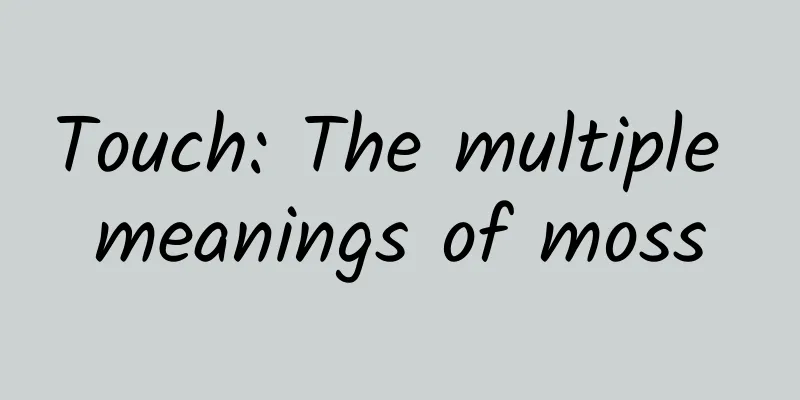One day, when AI learns to smell...

|
**The sense of smell is one of the earliest senses formed by the human body.** It is a very complex sensory response. The nose is like a highly sensitive detector. Through millions of olfactory nerves, we can perceive and distinguish various odor molecules with different structural characteristics so that we can make quick judgments in complex environments. With the continuous development of science and technology, artificial intelligence (AI) olfactory recognition technology that imitates human olfactory perception has developed rapidly. This technology combines advanced algorithms of machine learning and artificial intelligence, and can identify various substances by detecting and analyzing odor molecules. The application areas of AI olfactory technology range from environmental monitoring to medical diagnosis, from food safety to criminal investigation, and its potential is unlimited. When AI in many fine fields has surpassed human capabilities, we can't help but ask: In the "arena" of smell perception, who is better at smell perception, AI or the human nose? Before revealing the answer to this question, let's first understand the principles of human and AI smell perception. Perceiving smells (Photo source: veer photo gallery) Part 1 How does the human brain perceive smells? The process by which the brain perceives smell is like an encounter. First, odor molecules sneak into the nasal cavity. At the top of the nasal cavity is a special area called the olfactory epithelium . There are a large number of olfactory receptor cells here that can specifically recognize odor molecules. These odor molecules travel around in the nasal cavity, looking for their partners, which are our olfactory receptors. **Humans have about 400 functional olfactory receptors. **Once these receptors come into contact with odor molecules, they immediately cause electrical signals to change, performing an "electrical dance" to transmit signals to the brain. This signal travels directly through the olfactory nerve to a specific area of the brain called the olfactory bulb . Red is the olfactory bulb (Image source: Reference [1]) In the olfactory bulb, these signals are further processed and analyzed. The information is then sent to brain regions associated with memory and emotion, such as the hippocampus and amygdala. Finally, the brain converts these signals into odor sensations that we can recognize and understand, allowing us to perceive the smell's taste, texture, and other characteristics. Ultimately, the processing of olfactory nerve signals forms semantic representations that describe various smells, such as coffee, rose, durian, etc. This process is so magical and exquisite that it makes our lives full of the color and fun of taste. Human olfactory receptors and pathways (Photo source: veer photo gallery) Part 2 How does AI “smell”? We now have a general understanding of the principles and processes of how the human brain perceives smells, so how does AI smell various smells? AI "smells" odors like a "guessing game" based on molecular structure. Odors come from molecules with specific structures. These molecules are like "messengers" that carry odor signals. Therefore, to predict the odor of a substance, the key is to identify the composition and structure of the molecules. In this process, AI relies on a large and carefully organized database. This database can be regarded as an advanced "smell-molecule translation dictionary" that lists in detail the relationship between known molecular structures and their corresponding smells. The association between each molecule and smell is meticulously recorded and archived. A paper in Nature Machine Intelligence reports a neural algorithm designed to simulate biological olfaction (Image source: Nature Machine Intelligence magazine) When faced with the task of predicting the smell of a new molecule, AI will quickly search this professional "dictionary" to find known molecules with similar structures to the new molecule and infer possible odor properties from them. This process is not only fast, but also extremely accurate. In addition to basic structural matching, AI also takes into account other chemical properties, such as the electronegativity and stereo configuration of the molecule, to more comprehensively predict the odor characteristics of new molecules. The overall process is like an AI gathering and analyzing various clues to infer the smell that a new molecule might produce. In August 2023, a graph neural network (GNN) model for AI odor analysis was published in Science magazine. The process of AI identifying smells (Image source: Reference [4]) After the molecular structure is input into the model, GNN will optimize the weights of different chemical structures in a specific odor, and finally judge the odor of the molecule through the prediction layer and output the corresponding odor descriptor. The researchers conducted odor tests on the GNN model and the human group. The results showed that the AI outperformed the human experts in 53% of chemical molecules and 55% of odor description accuracy. Part 3 Humans vs. AI: Who is the smell expert? We can imagine a team of professionals who are **“smell experts”**. Unlike AI, which relies on large amounts of data and algorithms, these experts rely primarily on their sense of smell and years of accumulated experience to parse and describe smells. They are able to identify the subtle differences in a variety of complex smells and describe them in precise language. Concept image of a robot identifying the scent of flowers (Photo source: veer photo gallery) For example, they can clearly distinguish between different types of smells such as floral, fruity, grassy, leathery, etc. and give them in-depth explanations. In addition, these odor experts can also analyze and interpret odors based on their sources and environmental factors. For example, they can distinguish odors produced during cooking, plant odors, and unique odors of animals, and systematically analyze the causes and effects of these odors based on their characteristics and changes. Unlike the predictions of data-driven AI, the descriptions and judgments of these smell experts can be subject to subjective factors . Odor molecules enter the olfactory mucosa (Photo source: veer photo gallery) Their conclusions may vary from person to person and may even be affected by a variety of factors, so in some cases, their description of the smell may differ from the AI's judgment. Of course, this is just an imagination, and it does not mean that real smell experts are not professional. At the current stage, AI's sense of smell has not yet reached the level of crushing humans, and humans have irreplaceable advantages in the subjective experience and understanding of smell perception. First of all, faced with a complex odor spectrum, AI needs to rely on massive amounts of data and advanced algorithms for learning and simulation in order to output more accurate judgments. However, the human olfactory system can show higher flexibility, which is difficult for current AI systems to achieve. Correlation of predictions from different AI models with the average of the human group (Image source: Reference [4]) Human sense of smell is also affected by many other factors, such as emotions, health conditions, life experiences, etc. These factors may affect our perception and judgment of smells. These variables add a layer of complexity to human smell that AI lacks, making it difficult to fully understand and simulate the human olfactory system. Part 4 Conclusion Although AI has shown impressive potential in olfactory technology and has made significant progress in some areas, it has not yet surpassed humans in all aspects. Each has different advantages and limitations. As technology continues to advance, we have reason to expect AI to achieve more breakthroughs in olfaction. However, this field still faces many challenges, such as accurate identification, stability and repeatability of odor molecules, which require further research and improvement. In addition, public acceptance and trust in this emerging technology are also key factors in promoting its successful application. In summary, AI olfactory technology has broad development prospects and unlimited possibilities, but its specific development trajectory and results still need time and practice to verify. We look forward to researchers and engineers solving these challenges and bringing more convenience and safety to society. References: [1]Edmund Chong, Monica Moroni, Christopher Wilson, et al. Manipulating synthetic optogenetic odors reveals the coding logic of olfactory perception Science 2020, 368, 6497. [2]Lulu Guo, Jie Cheng, Shuo Lian, et al. Structural basis of amine odorant perception by a mammal olfactory receptor. Nature 2023, 618, 193. [3]Jia Duan, Peiyu Xu, Xiaodong Luan, et al. Hormone- and antibody-mediated activation of the thyrotropin receptor. Nature 2022, 609, 854. [4]Brian K. Lee, Emily J. Mayhew, Benjamin Sanchez-Lengeling, et al. A principal odor map unifies diverse tasks inolfactory perception. Science 2023, 381, 999. Produced by: Science Popularization China Author: Denovo Team Producer: China Science Expo This article only represents the author's views and does not represent the position of China Science Expo |
<<: Why do pufferfish become round and puffy like balls? Is it really because they are angry?
>>: Why do meteors have tails? This secret was solved in the Song Dynasty!
Recommend
OpenAI: OpenAI's annual revenue is expected to triple to $12.7 billion by 2025
Driven by the strength of its paid AI software, O...
Huami AMAZFIT Sports Watch: Daily payments can be completed with just a raise of the hand, and 11 sports modes make exercise more enjoyable
The development of the times has brought about ea...
It’s the season for picking wild vegetables again. How do you tell whether they are edible?
The good times of “everyone digs with a hoe” have...
Who are the people who support GMOs and who are against them? Are GMOs good or bad?
This article is based on answering similar questi...
How to attract the first batch of seed users without a budget? ?
The greatest value of operations is to achieve th...
Exchange cooperation tutorial: Things you don’t know about exchange
1. The significance of volume exchange cooperatio...
Will taking a nap make you stupid?
Source: A Brief History This article has been aut...
Can putting a mineral water bottle in front of a fan really turn it into an "air conditioner" in seconds?
As soon as the weather gets hot, the debate over ...
How to solve the problem of too high average click price in bidding promotion?
The most effective way to directly control the av...
7 ways to play in the short video field
In recent years, short videos have become a very ...
IE abandoned: open source monopoly is a good monopoly
Microsoft IE is about to die. A series of browser...
Will milk tea be classified into nutritional levels? Which level of milk tea is healthy?
According to recent media reports, Shanghai has p...
7 social media marketing methods and effectiveness evaluation methods!
Main contents of this article: What is Social Med...
How to attract traffic on Weibo, 5 tips on how to attract traffic (effective)
Traffic is actually not difficult, especially gen...
Contact list of iOS online mainstream channels for mobile game applications
Table of contents: 1. Contact information of iOS ...









